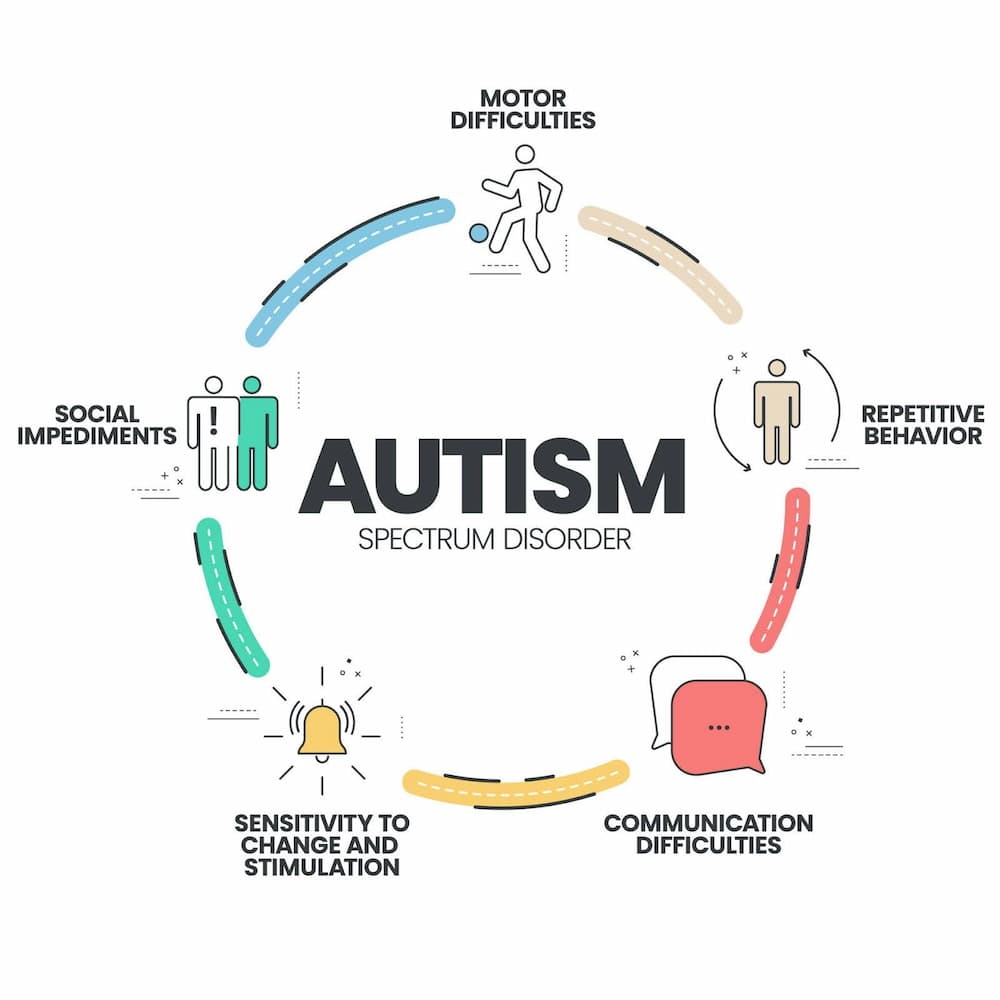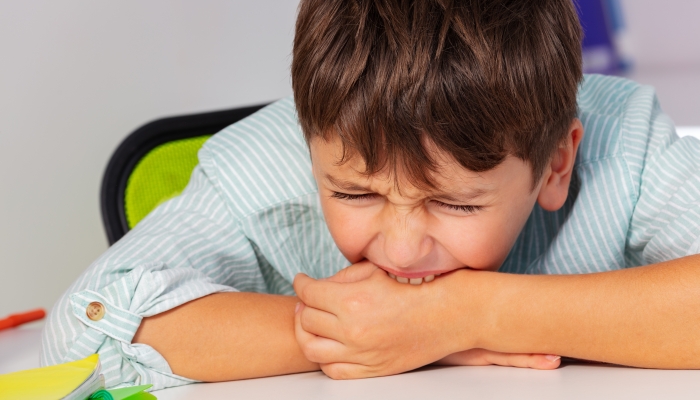Is it time to explore help from an Aba Therapist Near Me
Wiki Article
Understanding the Influence of Behavioral Autism on Daily Life and Social Communications
You might not understand exactly how deeply behavior autism influences daily life and social interactions. People on the spectrum often browse a globe filled up with interaction obstacles and sensory overload. These challenges can lead to aggravation and isolation, affecting their connections and overall well-being.Specifying Behavior Autism and Its Qualities
Behavior autism, often described as autism range disorder (ASD), includes a variety of problems identified by obstacles in social communication, interaction, and recurring behaviors. You might see that individuals with ASD often struggle to translate social hints, which can cause misconceptions in conversations. They might discover it hard to establish eye call or engage in tiny talk, making social circumstances really feel frustrating.Interaction problems can materialize in different ways, from delayed speech advancement to a choice for utilizing fewer words. By identifying these traits, you can promote a setting that advertises approval and motivates effective communication, helping people with autism flourish in their daily interactions.
The Range of Autism: Understanding Irregularity in Actions
Autism spectrum disorder (ASD) isn't a one-size-fits-all diagnosis; it differs commonly amongst people. You might notice that some people with ASD exhibit moderate signs, while others may face a lot more substantial challenges. This irregularity can materialize in behaviors, interests, and sensory level of sensitivities. You might encounter individuals that are extremely verbal and involve quickly in discussions, while others may choose singular activities or connect non-verbally.Furthermore, the way individuals with ASD react to sensory input can vary substantially; some could be overwhelmed by loud noises or bright lights, whereas others flourish in stimulating environments. The spectrum additionally includes differences in social communications; some individuals might battle to interpret social hints, while others navigate social settings with loved one simplicity. Understanding this irregularity is vital, as it helps you appreciate everyone's special experience and dressmaker assistance to their specific requirements, promoting a more comprehensive setting for every person.
Interaction Difficulties Encountered by Individuals With Autism
When you communicate with individuals on the autism range, you may observe their one-of-a-kind interaction challenges. They usually deal with difficulties with both nonverbal and spoken signs, which can influence their social interactions. Recognizing these barriers is vital for cultivating better connections and support.
Verbal Communication Troubles
Several individuals on the autism range experience verbal interaction troubles that can substantially influence their everyday communications. Your speed, tone, or volume might not straighten with social assumptions, triggering others to misinterpret your intentions. Recognizing these obstacles can assist you and your support network create techniques to boost communication and cultivate much better connections with others in your everyday life.Nonverbal Communication Obstacles
Verbal interaction isn't the only difficulty people on the autism range face; nonverbal interaction obstacles can be just as substantial. You may locate it hard to analyze body movement, faces, and eye contact, which are important for effective interaction. These obstacles can result in misconceptions or misinterpretations of social signs, making interactions really feel confusing or overwhelming. You might battle to reveal your very own feelings through nonverbal means, leaving others uncertain of your sensations or intentions. This disconnect can produce sensations of isolation and disappointment. Recognizing these barriers is crucial for promoting understanding and empathy in your interactions. By addressing nonverbal communication, you can find techniques to boost your social experiences and enhance your overall quality of life.Social Interaction Effects
Social communications can usually feel overwhelming due to the one-of-a-kind communication obstacles encountered by people with autism. Identifying these obstacles can assist you find techniques to enhance communication, such as exercising social abilities in safe setups or making use of visual aids. Understanding your needs enables you to navigate social communications with greater confidence and convenience.Social Interaction and Partnership Building in Autism
While structure relationships can be testing for people with autism, understanding their unique perspectives and communication styles can promote significant links. You could notice that numerous individuals on the spectrum prefer direct interaction and may struggle with social signs or little talk. By being straightforward in your interactions, you can aid develop a setting where they really feel comfy.Take the time to pay attention and observe how they share themselves. This insight can direct you in guiding conversations much more effectively. Participating in shared rate of interests can additionally function as a bridge to deeper links. Whether it's a hobby, a favorite show, or a common passion, these common strings can open doors to relationship.
Daily Life Regimen: Browsing Techniques and difficulties
Steering day-to-day life routines can be especially testing for individuals with autism, specifically when unforeseen changes take place. To browse these difficulties, think about applying visual routines or checklists.Developing a routine that includes sensory breaks can likewise be helpful. This helps produce an understanding atmosphere.
Finally, practice mindfulness techniques to manage stress and anxiety and anxiety. Easy breathing workouts or basing techniques can make a substantial distinction. By incorporating these approaches, you can boost your daily regimen and decrease interruptions, making life really feel more workable.
Toughness and Abilities of People on the Autism Spectrum
Recognizing daily life routines is just one aspect of the autism experience. Several individuals on the autism range visit this site have remarkable toughness Our site and capacities that establish them apart.In addition, your memory abilities frequently beam, specifically in locations of passion. Autism Therapist. This propensity for preserving details can make you a useful source in fields like innovation, science, or art. You might likewise display strong visual reasoning, enabling you to imagine complex ideas and solve issues artistically
Furthermore, your unique point of view on the world can cultivate empathy and understanding in others, enriching social communications. Welcoming these strengths not just enhances your self-confidence however also helps others value the diverse abilities you give the table.
Producing Inclusive Environments for Individuals With Autism
Producing inclusive environments for individuals with autism starts with designing sensory-friendly areas that deal with their special needs. You can additionally promote opportunities for social communication, aiding to build relationships and links. By making these modifications, you'll contribute to a much more inviting ambience for everybody.Designing Sensory-Friendly Spaces
While making sensory-friendly areas, it's vital to mirror on the one-of-a-kind requirements of people with autism. Integrate silent zones where individuals can pull back and charge when bewildered. Consist of aesthetic timetables or clear signage to aid individuals navigate the room confidently.Advertising Social Communication Opportunities
Designing sensory-friendly rooms not only addresses individual convenience yet also sets the phase for significant social communications amongst individuals with autism. Urge peer mentoring, combining individuals with autism with encouraging peers who can direct them via social circumstances. By implementing these methods, you can improve social opportunities, helping individuals with autism build friendships and enhance their social skills in a secure, welcoming environment.
Frequently Asked Questions
How Can Buddies Assistance Somebody With Behavioral Autism?
You can support a good friend with behavior autism by holding your horses, listening proactively, and valuing their borders. Take part in activities they appreciate, interact freely, and create a comfy environment where dig this they feel valued and comprehended.What Resources Are Available for Parents of Children With Autism?
You can check out various resources for parents of children with autism, consisting of support system, educational internet sites, and neighborhood community services. Linking with various other moms and dads can also supply important insights and shared experiences to aid navigate obstacles.
Can Behavioral Autism Modification In Time?

Yes, behavioral autism can transform with time. You might discover changes in interaction, social skills, and habits as your youngster grows. Early treatment and assistance typically play vital duties in these developmental modifications.
Just How Do Sensory Level Of Sensitivities Impact Daily Life?
Sensory sensitivities can make day-to-day experiences frustrating. You might battle with intense lights or loud noises, resulting in stress and anxiety or avoidance. Finding environments that accommodate your requirements can substantially boost your convenience and overall every day life.What Are Common Misconceptions Regarding Behavioral Autism?
You may assume behavior autism just influences interaction skills, however it's even more complex. Several presume people do not have compassion or intelligence, which isn't true. Recognizing these false impressions assists foster approval and assistance for those on the range.Behavior autism, frequently referred to as autism range condition (ASD), encompasses a range of problems identified by difficulties in social communication, communication, and repetitive actions.Social communications can frequently feel overwhelming due to the one-of-a-kind interaction obstacles faced by people with autism.Creating sensory-friendly areas not only addresses individual convenience but also establishes the stage for significant social communications among individuals with autism. Encourage peer mentoring, matching individuals with autism with encouraging peers who can direct them via social situations. By carrying out these strategies, you can improve social possibilities, helping people with autism develop relationships and enhance their social abilities in a risk-free, inviting setting.
Report this wiki page